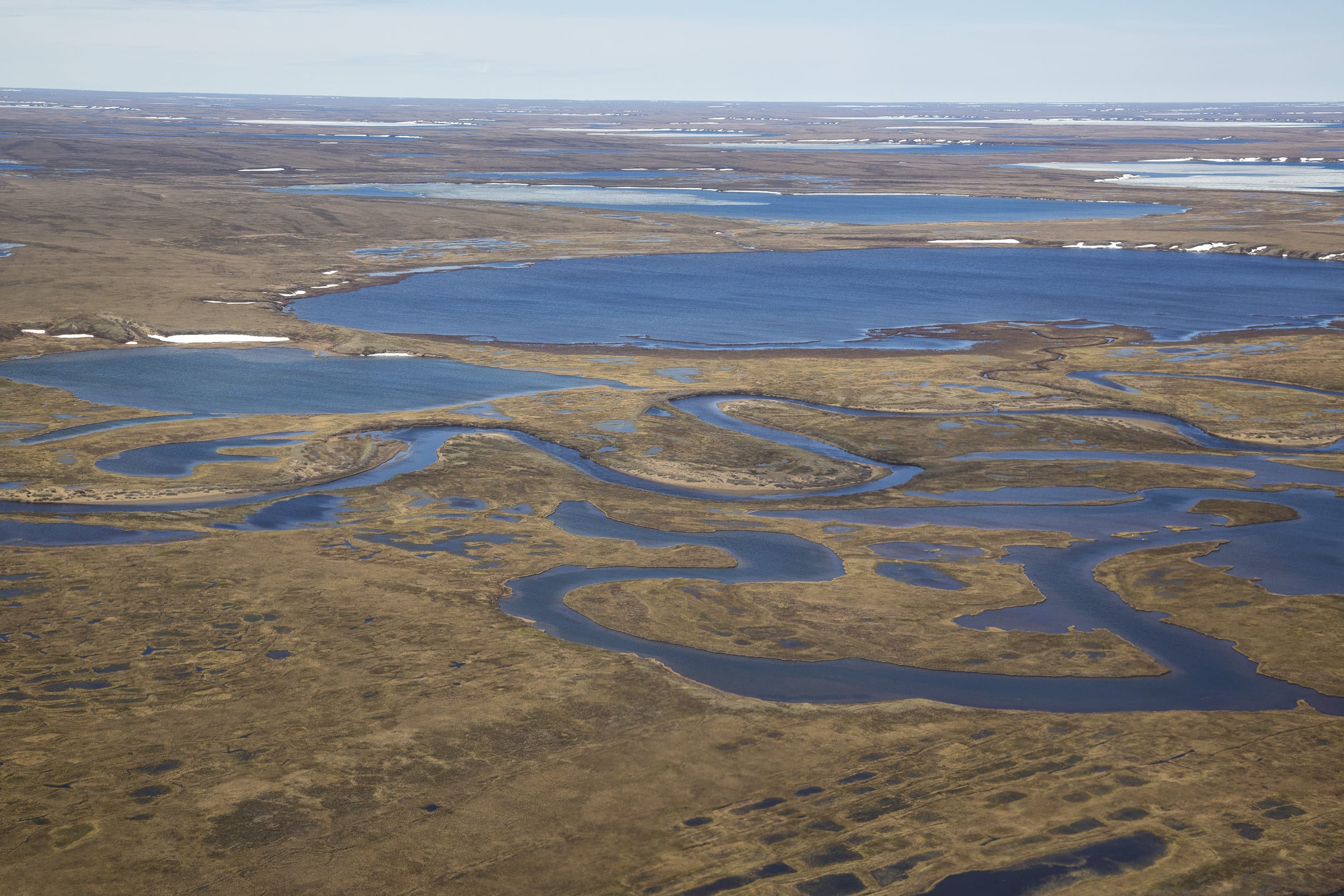
The DOI ruling protects five Special Areas in the National Petroleum Reserve – Alaska that are well known for their significant natural and cultural value
Contacts:
- Chris Wood, President and CEO, Trout Unlimited – chris.wood@tu.org
- Steve Kandell, Director, National Campaign Support Center, Trout Unlimited – steve.kandell@tu.org
- Zoe Bommarito, National Advocacy Communications Director, Trout Unlimited – zoe.bommarito@tu.org
ARLINGTON, VA. – The Department of the Interior (DOI) today finalized a rule limiting or prohibiting new oil and gas development across 13 million acres within the National Petroleum Reserve – Alaska, a step that will safeguard pristine fish and wildlife habitat. The 23.5-million-acre reserve located on Alaska’s North Slope is the largest block of federal land in the country and is home to a diversity of fish and wildlife including polar bears, caribou, Dolly Varden, grayling, moose, and hundreds of thousands of migratory birds.
The DOI ruling protects five Special Areas in the Reserve that are well known for their significant natural and cultural value, along with their critical wildlife migration corridors and aquatic connectivity. Collectively, the Special Areas make up 13 million acres of the National Petroleum Reserve and contain an estimated 37,000 miles of coldwater streams and 1.1 million acres of lakes and ponds. These unique landscapes also store 757 tons of carbon per hectare – double that of the Amazon rainforest.
“Conservation is typically three yards and a cloud of dust. Opportunities to protect 13 million acres of America’s most sensitive fish and wildlife habitat don’t come around very often,” said Chris Wood, CEO and President of Trout Unlimited. “Sportsmen and women should celebrate the expansion of protections for 13 million acres of the reserve, including more than 37,000 miles of coldwater streams.”
The Arctic continues to warm twice as fast as the global average. From melting ice causing sea-level rise to more frequent storms hammering coastlines, the region is experiencing some of the worst impacts from the climate crisis.
The rule does not affect existing oil and gas activities. Currently, 2.5 million acres of the Reserve are leased.
Protecting the Reserve’s Special Areas is another step in mitigating the impacts of climate change and make America’s lands, waters, communities, and fish and wildlife populations more resilient. These safeguards will help the United States reach the Biden administration goal of conserving 30 percent of lands and waters by 2030.
Learn more:
- https://www.tu.org/magazine/conservation/advocacy/blm-proposes-safeguards-for-national-petroleum-reserve-alaska/
- https://www.washingtonpost.com/climate-environment/2023/09/06/biden-alaska-oil-drilling-ban-willow/
###
Trout Unlimited is the nation’s oldest and largest coldwater fisheries conservation organization dedicated to caring for and recovering America’s rivers and streams so our children can experience the joy of wild and native trout and salmon. Across the country, TU brings to bear local, regional, and national grassroots organizing, durable partnerships, science-backed policy muscle, and legal firepower on behalf of trout and salmon fisheries, healthy waters, and vibrant communities.

